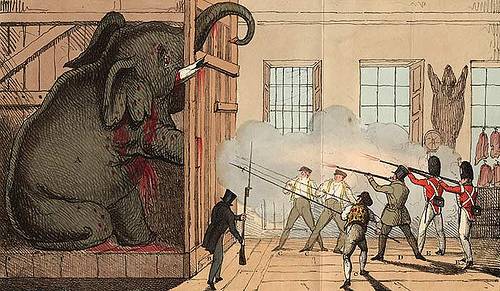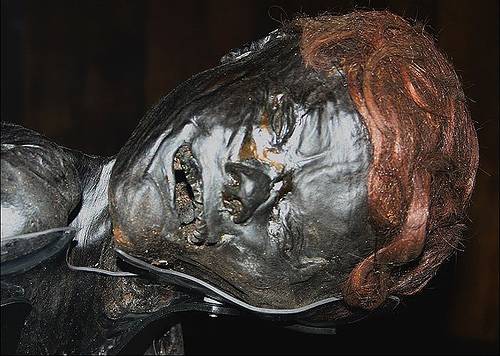
Another case of man’s inhumanity to elephants. Don’t even read this one. Seriously.
In 1826, the owners of a London menagerie decided to kill Chunee, their 5-ton Indian elephant. The animal had been docile for years — Lord Byron said “I wish he was my butler” — but he grew violent toward the end of his life, perhaps aggravated by pain from a rotten tusk. When, on a rampage, he killed one of his keepers, it was decided he was too dangerous to keep.
Unfortunately, Chunee wouldn’t eat poison. So a group of musketeers were summoned to his cage, a trusted keeper ordered him to kneel, and the soldiers began to fire volleys into his chest and legs. This continued for more than an hour, during which one witness reported that the sound of the elephant’s “agony had been much more alarming than that made by the soldier’s guns.” Even with 152 musketballs in him, the elephant continued to live, kneeling in a cage full of blood, so they had to dispatch him, finally, with a sword.
News of the slaughter inspired numerous poems and even a successful play, but owner Edward Cross sought a profit even in the animal’s death. He charged a shilling to see the body dissected; he sold the hide (which took nine butchers 12 hours to remove); and he put Chunee’s skeleton on display in his old cage — with the bullet holes in his skull clearly visible.





